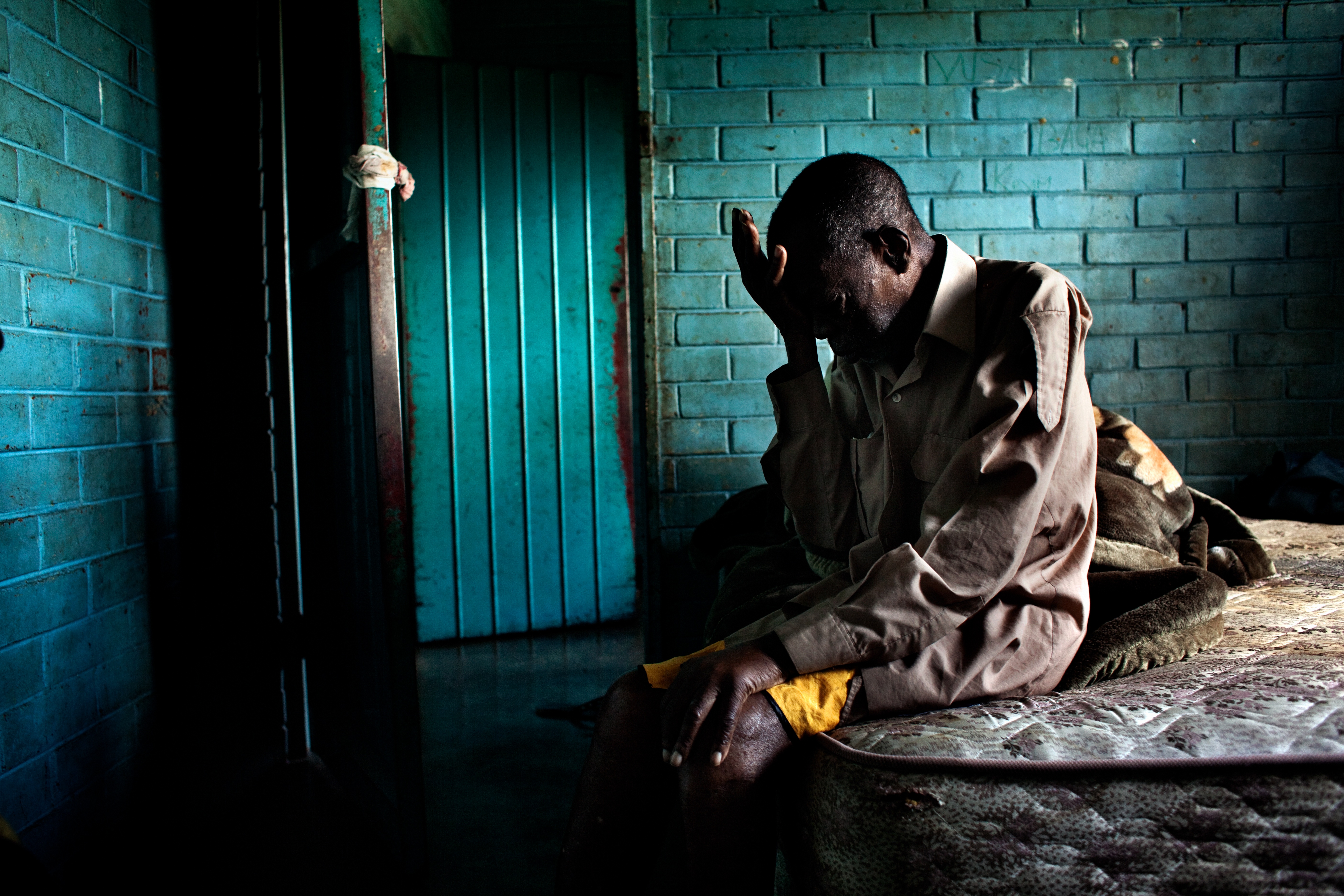Documenting life in Zimbabwe
Sweep aside the heavy curtains at the entrance of the Chapelle d’École des Beaux-Arts in Paris and you will be confronted by photographs documenting the decline of Zimbabwe under the rule of Robert Mugabe, and the lives of people suffering on so many levels.

Bedridden by illness, 76 year old Nyatwa relies on his 22 year old grand-daughter to care for him. Robin Hammond, Panos, Carmignac Gestion Photojournalism Award
![]() read more
read more
How to correct shifting lines in photographs
If you take photographs, you’ve probably encountered this situation: You’re trying to photograph a building or a group of buildings, but you can’t move back any further. So in order to get the whole structure into the picture, you use a wide angle. In the resulting frame, the houses look like they’re about to fall over. This phenomenon is caused by a distortion of perspective brought about by the wide angle lens, the so-called shifting or converging lines. In many cases, a free software called ShiftN can help. It automatically corrects shifting vertical lines and turns them into straight verticals.
The video below shows you what this software can do.
This is how the programmers describe this free software: “ShiftN permits correction of converging lines; a majority of the correction work is taken over automatically by the program. Using the ‘automatic correction’ item in the menu is in most cases sufficient to produce a satisfying result. Both the effects of converging lines and poor camera angle are corrected automatically.”
It works, but it doesn’t work wonders
If you use ShiftN to correct converging lines, be careful not to overdo it.  Seeing only straight verticals instead of shifting lines doesn’t look natural. Your photos will seem awkward and unnatural.
Seeing only straight verticals instead of shifting lines doesn’t look natural. Your photos will seem awkward and unnatural.
ShiftN is great if the distortion is only minor, as seen in the example video. But a case like those white high rises you see at the top of this page is too much for ShiftN’s automatic correction.
As you see on the right, the way ShiftN “corrected” this picture looks artificial. The manipulation is obvious and makes the viewer uncomfortable.
In some cases, you’ve just got to take another step back to get the perfect picture – or be prepared to live with converging lines.
By Thorsten Karg
Edit photos online with PicMonkey
 When Google closed its popular Picnik online photo editing service earlier this year, there must have been a collective internet cry of “No!”. For journalist trainees Picnik was a great way of introducing the basics of photo editing, and it was available in several languages. So, what can fill the gap? Enter PicMonkey. Oh and by the way, it’s easy to use and it’s free.
When Google closed its popular Picnik online photo editing service earlier this year, there must have been a collective internet cry of “No!”. For journalist trainees Picnik was a great way of introducing the basics of photo editing, and it was available in several languages. So, what can fill the gap? Enter PicMonkey. Oh and by the way, it’s easy to use and it’s free.
![]() read more
read more
10 tips on how to take great photos
Producing a good photograph isn’t necessarily about the equipment you use. A camera is just a tool. It’s also about the composition, framing and perspective you choose. Here are 10 tips which will help you produce better photographs.
1. See things differently
Perspective is what really makes a difference between a snapshot and a professional photo. Move your feet! Crawl under things, get on top of them, look for interesting angles.
![]() read more
read more
Photographer from Bangladesh named winner of the “KLICK!” photo competition
 GMB Akash of Bangladesh won first place in the international photo competition called “KLICK! – Your View of Human Rights and Globalization”. The name of his winning picture is “Children’s Hands”. The contest was launched by Deutsche Welle and Amnesty International. The winning photographs were decided by around 1,500 participants at this year’s Deutsche Welle Global Media Forum in Bonn, Germany, which ended on Wednesday, 22 June 2011.
GMB Akash of Bangladesh won first place in the international photo competition called “KLICK! – Your View of Human Rights and Globalization”. The name of his winning picture is “Children’s Hands”. The contest was launched by Deutsche Welle and Amnesty International. The winning photographs were decided by around 1,500 participants at this year’s Deutsche Welle Global Media Forum in Bonn, Germany, which ended on Wednesday, 22 June 2011.
Of his winning shot, photojournalist GMB Akash says, “It shows eight year old Munna who works in a rickshaw factory in Dhaka, Bangladesh. The boy earns about 500 taka (7 U.S. dollars) a month, working 10 hours a day. When production often stops due to lack of electricity, he has time to play. It is common in Bangladesh for children of poor parents to work in various hazardous and labor-intensive
First Place Winner: “Children’s Hands” by GMB Akash
workplaces to support their families. Seventeen and a half percent of all children aged between 5-15 are engaged in economic activities. The average child worker earns between 400 to 700 taka per month, while an adult worker earns up to 5,000 taka per month.” One U.S. dollar equals about 70 taka.
![]() read more
read more









Feedback